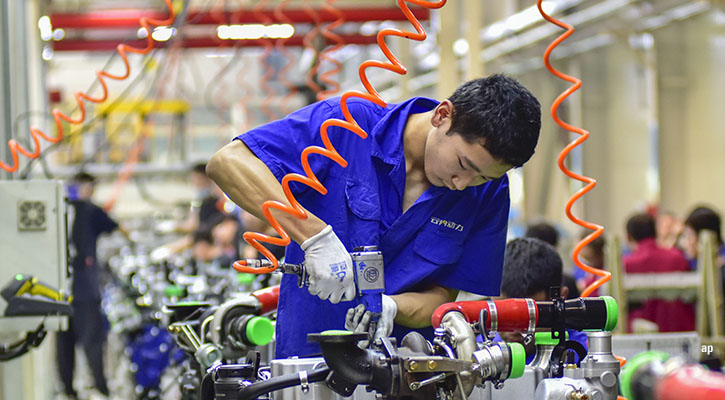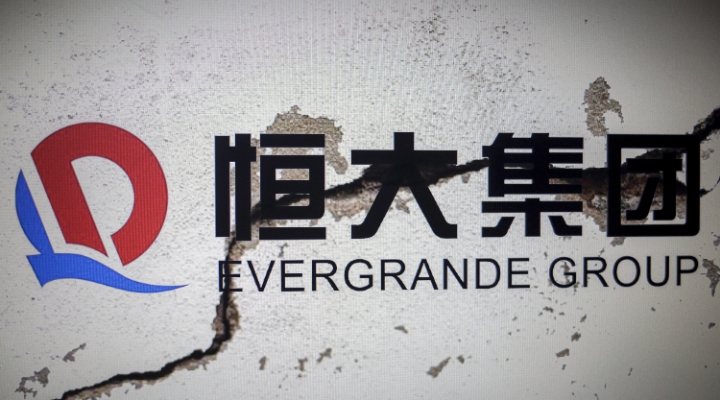
As geopolitical tensions continue to heat up, incentives seem skewed towards the emergence of a more multipolar world.
For China, a strategy to align with the developing world (46% of global GDP and 86% of population) provides a significant demand base for its emerging multinational champions to thrive and advance the evolution from "made in China" by foreign companies to "made by China".
The US and broadly the West has rarely allowed ideology to stand in the way of mutual self-interest in external relationships, including its relationship with China. The key difference today is the West is now threatened by the rise of China’s mercantile and political power.
While the tail-risk of a dislocation is growing, there remains a powerful incentive for the two superpowers to co-exist for the sake of shared economic prosperity.
A Downstream Move
China is already a global leader in manufacturing and, according to Morgan Stanley, leading in 28 out of 47 key security industries (for example, in renewable energy and rare earth metals). Remarkably, in 18 of these technologies, it has over 50% share of the global market. The US is leading in only eight.
This is either as the owner of the intellectual property (IP), as in the case of the domestic electric vehicle (EV) brands where China has successfully moved downstream to now become the world’s largest auto exporter by volume, or by owning the IP along the supply chain. For example, Chinese homegrown suppliers now develop and manufacture critical components for the iPhone 14 that account for 25% of the bill of materials, compared to just 3%, or $6 of an iPhone 4 in 2010, mostly relating to assembly.
The domestic scale that will inevitably accrue to Chinese businesses, strategic focus on research and development and expansion into other emerging markets will make it difficult to keep them out of developed markets.
We assess that the significant and durable growth opportunities of many of these emerging multinationals are mispriced as investment opportunities.
Midea Group (000333)
Midea made its entry into household appliance manufacturing in the 1980s, initially as the manufacturing partner of the Toshiba brand, which it acquired in 1998. It has since become one of the largest air conditioning manufacturers in the world, with circa 11% of total industry revenue according to Deallab.
An efficient cost structure and investment in distribution has allowed Midea to price competitively and grow market share both domestically and overseas. Over half of exports are to emerging markets which are suited to its value-oriented products and will exhibit structural growth from higher penetration and upgrades to lower energy intensive units.
The acquisition of German robotics business Kuka in 2017 for $5bn leverages Midea’s mega scale manufacturing experience and extends its addressable market opportunity to industrial automation technologies. Midea’s price-earnings of 12x and high RoCE compares favourably at almost half the multiple of Japanese competitor Daikin.
Sany Heavy Industry (600031)
Sany Heavy is China’s largest construction machinery business and is also a top five global player.
Sany’s competitive edge has come from leveraging the established heavy equipment parts supply chain in China and leading with value. Servicing is offered at cost in China and 20-30% cheaper than western peers in export markets which operate servicing and fleet management as a profit centre. This has allowed Sany to gain a leading position in emerging markets which account for over 60% of export sales and is a large potential profit opportunity as these markets mature.
Domestically the macro slowdown has weighed on margins and the stock is priced at 20x cyclically low 2023 earnings, a likely attractive entry point assuming some recovery in domestic demand.
Contemporary Amperex Technology (300750)
Electrification is the largest reset in manufacturing of automobiles since the emergence of mass-production and has offered an opportunity for China to quickly gain a foothold in the $2.9tr per year industry. China’s target of EVs accounting for 20% of new vehicle sales was achieved in mid-2022, more than three years ahead of schedule.
Chinese auto manufacturers' ability to meet the market, where 58% of total auto sales are for vehicles priced below $22,000, was key to their success. The recently launched battery electric vehicle from Chinese automaker BYD, priced at $11,000 with a 405km range, is a good example of mass market capability.
Chinese Equities Through a Different Lens
Capital controls have been a feature of China's investment-led growth, which is unlikely to change without a material shift to a consumption led economy. Hence, domestic households and businesses will reinvest their savings into Chinese assets for some time. With cash representing over 50% of household financial assets and the longer-term outlook for property less optimistic, there is a large pool of funds that is likely to be invested in equity markets.
China's current representation in global benchmarks is weighted towards Chinese companies listed outside of the mainland (HK and US ADR) and the mainland A shares are weighted with a MSCI discounted inclusion factor of only 20%. The result is an MSCI ACWI weighting to China of only 4% as compared to the 16% total market cap.
Foreign sentiment has deteriorated such that Chinese equities listed offshore (H and ADR) are trading at the largest discount to the World Cyclically Adjusted PE in 20 years despite several supportive factors. Over 2021-22 company earnings forecasts have been impacted by multiple policy headwinds, however, tight policy has been reversing since early 2022 with easing accelerated over the year, and with low inflation, China holds a significant amount of policy flexibility in the face of a slowing global economy.
In conclusion, as top-down geopolitical commentary grabs the headlines, we would argue that the extrapolation of the doomsday scenario is hiding the bottom-up reality of China’s attractively valued emerging multinationals.
Alison Savas is investment director at Antipodes Partners




























